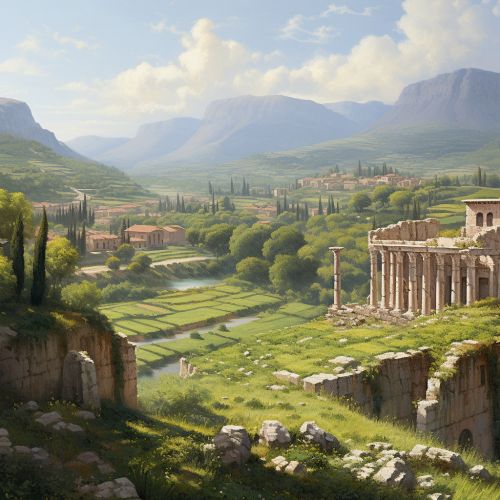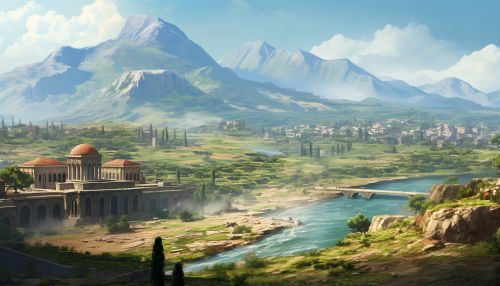Sparta
Introduction
Sparta was a prominent city-state in ancient Greece. In antiquity, the city-state was known as Lacedaemon, while the name Sparta referred to its main settlement on the banks of the Eurotas River in Laconia, in south-eastern Peloponnese. Around 650 BC, it rose to become the dominant military land-power in ancient Greece.
Geography
Sparta is located in the region of Laconia, in the south-eastern Peloponnese. Ancient Sparta was built on the banks of the Eurotas River, the main river of Laconia, which provided it with a source of fresh water. The valley of the Eurotas is a natural fortress, bounded to the west by Mt. Taygetus (2407 m) and to the east by Mt. Parnon (1935 m). To the north, Laconia is separated from Arcadia by hilly uplands reaching 1000 m in altitude. These natural defenses worked to the advantage of the Spartan state by providing a secure hideout for the Spartan citizens in case of invasion.


History
Origins
The origins of Sparta are believed to date back to the Neolithic period. Significant archaeological evidence has been found, including the remains of large stone structures which provide insight into the early stages of the Spartan civilization.
Mycenaean Sparta
During the Late Bronze Age (1600–1100 BC), Sparta was a significant Mycenaean centre. At this time, the population of the settlement occupied the acropolis, or high city, and its immediate surroundings.
Dorian Sparta
Around 1100 BC, the Dorians invaded from the north, and Sparta underwent significant social, political, and cultural changes. The Dorians were a Greek tribe who are traditionally believed to have migrated to the Peloponnese from Epirus.
Classical Sparta
Classical Sparta was a warrior society, with every male citizen receiving rigorous military training. The Spartan political system was a unique combination of monarchy, oligarchy, and democracy. The city was ruled by two hereditary kings, from the Agiad and Eurypontid families, who served as the commanders-in-chief of the army.
Hellenistic and Roman Sparta
During the Hellenistic and Roman periods, Sparta underwent significant changes. It was conquered by the Achaean League in the 2nd century BC, and later by the Romans in the 2nd century AD. Despite these conquests, Sparta retained its distinct cultural identity.
Society
Spartan society was divided into three main classes: the Spartiates, or full Spartan citizens who underwent the agoge (the rigorous education and military training program); the Perioeci, free non-citizens who were artisans and traders; and the Helots, state-owned serfs from conquered regions.
Military
The Spartan military was renowned in the ancient world for its discipline, tactics, and efficiency. The backbone of the Spartan army was the hoplite, a heavy infantryman equipped with a round shield, spear, and Corinthian-style helmet. The Spartan hoplites were considered the best in Greece.
Culture
Despite their military prowess, the Spartans were also known for their austere lifestyle, discipline, and dedication to physical fitness, which was instilled from a young age through the agoge. Spartan women enjoyed a level of freedom and education not common in the rest of the classical world.
Legacy
The legacy of Sparta has had a profound influence on Western military tradition and culture. The term "spartan" has come to mean self-restraint, simplicity, and austerity.
